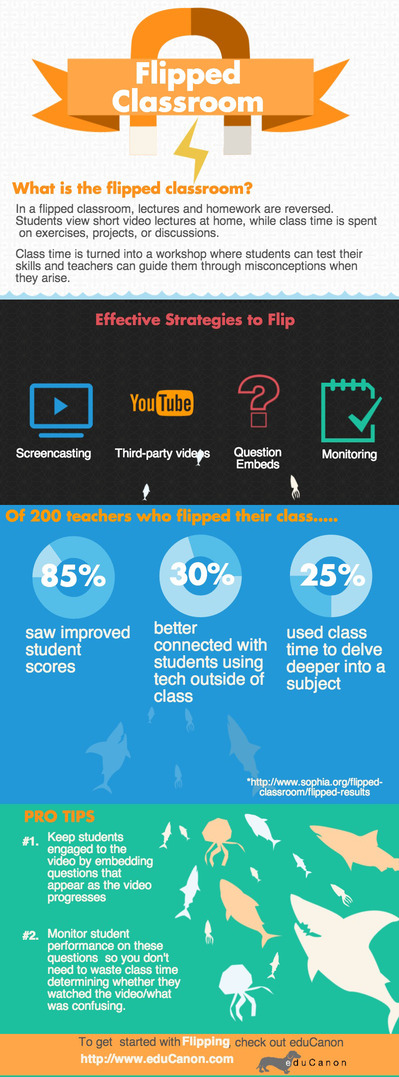Is the Flipped Class Model Here to Stay?
This is a post from one of eduCanon’s co-founders, Swaroop Raju. eduCanon is a platform that makes online videos interactive by allowing teachers to embed questions during the video, so students are actively learning and instructors can monitor understanding in real-time or in preparation for class.
It’s been about seven years now since Jon Bergmann and Aaron Sams set off on their journey to make the most of the limited face-to-face time with their students. The two realized that the time the students needed them the most was when they were stuck on homework questions and needed individual help—thus the “flipped classroom” came to be. In the years since they pioneered the flipped classroom (defined in this post as delivering video lecture as a homework assignment with traditional homework done during class), it would be an understatement to say that the methodology has been polarizing.
Enthusiasts believe that the flipped classroom movement is completely transforming education, while detractors believe that the technological hurdles are too formidable. So where are we right now? Is there any data to support that flipped learning is effective, or even whether a significant number of teachers/administrators are adopting the flipped classroom?
A recent SpeakUP survey (study here) of 403,000 educators, students, and parents found, among other results, that:
- 25 percent of administrators believe flipped learning has already had a “significant impact” on transforming teaching and learning in their school or district
- One out of six math/science teachers are already implementing a flipped learning model
- 16 percent of teachers are regularly creating videos of their lessons or lectures for students to watch
- Almost one-fifth of current teachers have “learning how to flip my classroom” on their wish list for professional development this year
- 66 percent of principals believe pre-service teachers should be learning how to create and use videos within their teacher training programs
A quick browse of the Twitter hashtag conversations #flipclass, #edtech, and #edtechchat points to two common threads interwoven among voiced hesitancies:
1. Accountability is a huge challenge. Teachers are, after all, disconnected from their student’s viewing experience.
2. Teachers do not have time to do what feels like a complete transformation.
As we’ve built out eduCanon, we’ve kept in mind these two challenges, because we believe that video has the potential to engage and energize students. And we believe that teachers are busy enough—flipping or blending your classroom should be a seamless process. That is why we’ve carefully measured the amount of time it takes to embed formative assessments into video through eduCanon, keeping lesson creation under 10 minutes, and we’ve made sure that the visualization of student performance is simple. Teachers can see who watched the video and what confused their student in one quick glance.
I believe the flpped classroom movement is here to stay, but only if the tools to flip are simple, training is adequate, and technology companies like ourselves work hand-in-hand with teachers to tackle the challenges of flipping.
Follow eduCanon on Twitter @eduCanon123


Another fad doomed to fade away!